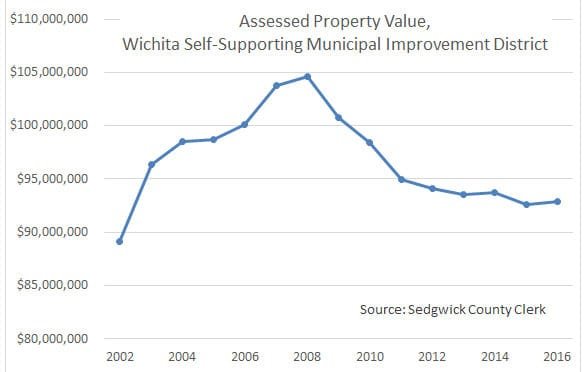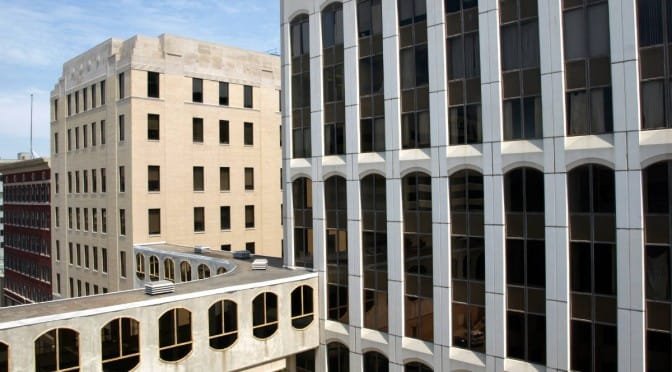Last Thursday at a meeting of the City Clerks and Municipal Finance Officers Association of Kansas, the effectiveness of the federal economic stimulus and the Kansas economy were discussed. Americans For Prosperity National Director of State Operations Alan Cobb and Kansas Secretary of Revenue Joan Wagnon were the participants, with Dale Goter, Wichita Governmental Relations Manager, as moderator.
Wagnon started the debate by reciting the distress that the economy has experienced over the past year. She said that these conditions said to the new president “You need to do something.” She said that about 10,000 jobs were picked up in Kansas by the federal stimulus plan. The stimulus worked, she said.
Cobb said that to conclude that the stimulus has worked is premature. He said that in Kansas 6,500 jobs were created at a cost of $500 million, a cost of about $75,000 per job created. There’s a fundamental problem in politics, he said, in that politicians look at the short-term, not the long term. In the long term, there is no question that the stimulus spending will result in lower growth, as the borrowed money must be repaid. It’s the “seen” versus “unseen” problem.
Goter asked: “What if nothing had been done?”
Cobb replied that the President Obama’s team had said that without the stimulus, unemployment would rise to 7.5%, noting that today the rate is 10.2%. Wagnon relied that without intervention, more Kansas banks would have failed, and that the flow of credit would have shut down more than it has. Kansas would have run out of unemployment compensation funds, too, requiring the state to ask employers to make larger contributions at the same time they were laying off employees, resulting in a downwards spiral. She recited a list of construction projects and counties that received stimulus money.
Wagnon referred to lessons learned during the Great Depression, that the power of the federal government was used to save the economy. Cobb replied that the lesson to be learned is the opposite. It took ten years to recover. Massive government intervention and higher taxes prolonged the Great Depression, he said.
Goter asked: “Where do we go from here?”
Wagnon explained that we spent a lot of our stimulus money on K-12 education. This helped the state get through fiscal years 2009 and 2010. For 2011 — the budget year that the Kansas legislature will begin working on in January — the stimulus money is no longer available. She said that we’re likely to see another round of cuts, not only in budget expenditures, but also in tax expenditures.
There’s no appetite for raising taxes, she said. She noted that the 2010 Commission has recommended raising taxes instead of cutting spending.
Cobb replied that the stimulus money is misnamed, as much of the spending is not stimulative. It simply replaced existing state spending and delayed some tough political decisions. Spending is the real problem, he said, noting that if spending had increased at just the rate of population growth plus inflation over the last six or seven years, Kansas would have perhaps $500 million in the bank now.
Wagnon referred to the large number of governmental bodies in Kansas, saying that we may not be able to afford small school districts and the large number of county governments.
Goter asked “Have we gone too far with tax exemptions?”
Wagnon referred to these as tax expenditures. She said there’s a report on the Kansas Revenue Department website that details the cost of these. We should look at the cost of these expenditures, she said. The effectiveness of economic development tools should be looked at, and we’re giving away more than we need to in order to attract jobs.
Wagnon said we’ve phased out the estate and franchise tax, and we need these revenues. She also mentioned the giveaways of employee withholding tax that Kansas has granted, where a company gets to use its employee tax contributions to repay economic development incentives. “What’s the value of a job, then, at that point?” People go after tax expenditures because they’re confidential and easier to get than going through the appropriations process, she said.
Cobb said he agrees with some of the problems with these exemptions, although they’re not really expenditures, as the money belongs to the people to begin with. A better policy is lower tax rates for everyone with fewer exemptions. Corporate welfare does not grow a state’s economy, he added. Government is not equipped to pick winners and losers in the economy. Companies make location decisions based on labor force, tax rates, and markets, with incentives viewed simply as gravy.
Analysis
One of the most important lessons to take from this debate is to realize that the attitude commonly held by government officials such as Joan Wagnon is that taxes belong to the government first. Government, according to many officials, has a legitimate claim on the income and property of citizens, and if a reduction is given, it’s considered a cost to government. This is why Wagnon called them “tax expenditures.” This is the attitude of our former governor. The Kansas school spending lobby feels the same way, too.
To learn more about the “seen and unseen” that Cobb referred to, read this excerpt from Economics in One Lesson, in which Hazlitt explains the fallacy of the broken window.
Kansas Senator Chris Steineger has introduced legislation to reduce the number of counties in Kansas, as reported in Steineger introduces Kansas county consolidation bill.
A report by the Kansas Division of Legislative Post Audit on the effectiveness of $1.3 billion spent by Kansas on economic development incentives is at Determining the Amounts the State Has Spent on Economic Development Programs and the Economic Impacts on Kansas Counties. Reporting from the Lawrence Journal-World is at Effect of economic spending in doubt. Readers of this site know that the effectiveness of economic development efforts by government is one of the issues I feel most strongly about. My recent testimony on this matter to the Wichita City Council is at Wichita universal tax exemption could propel growth.


 Wichita city leaders have promoted public investment in downtown Wichita as wise because it will increase the tax base. Over the past ten years, we’re told that there has been one billion dollars in investment in downtown Wichita, including projects in progress.
Wichita city leaders have promoted public investment in downtown Wichita as wise because it will increase the tax base. Over the past ten years, we’re told that there has been one billion dollars in investment in downtown Wichita, including projects in progress.





